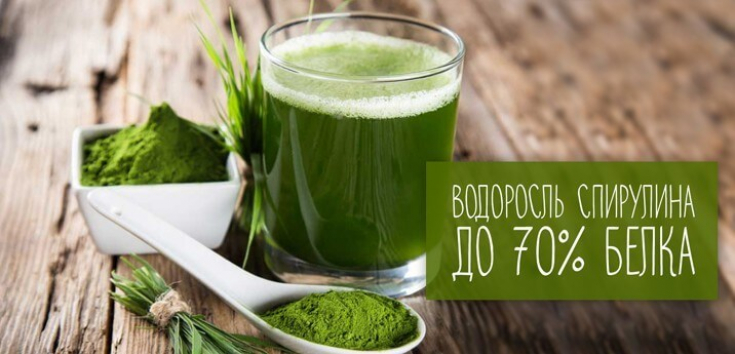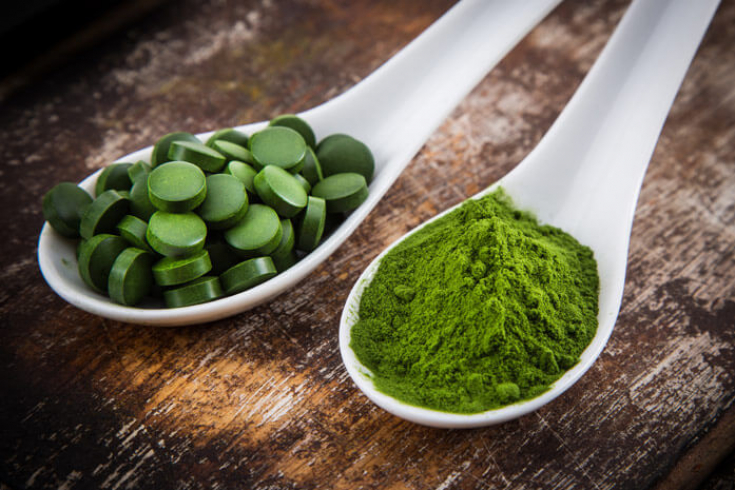Microalgae of the genus Spirulina (Spirulina) have been eaten for centuries for their nutritional properties and purported health benefits. Nowadays, people leading a healthy lifestyle have also begun to actively include spirulina algae in their diet, calling it a superfood. Today estet-portal.com decided to find out what beneficial properties spirulina has, what types of it are eaten, what contraindications exist for eating these microalgae.
What is Spirulina Algae?
Spirulina used to be classified as a plant due to its high content of plant pigments, as well as its ability to photosynthesize. Now, having examined its genetics, physiology and biochemical properties in more detail, scientists have attributed spirulina algae to the kingdom of bacteria, first to the genus Arthrospira, and then – Spirulina.
These unicellular algae got their name due to their shape – a coiled spiral that can be seen under a microscope.
These unicellular algae got their name due to their shape – coiled spiral that can be seen under a microscope. Particular attention is directed to the study of three types of microalgae data – Spirulina platensis, Spirulina maxima and Spirulina fusiformi s. It is these species that are characterized by high nutritional value, as well as potential medicinal properties.
Then estet-portal.com will tell you:
- what nutrients do spirulina algae contain;
- what are the benefits of spirulina.
What nutrients does Spirulina Algae contain?
Spirulina cyanobacteria are also often referred to as blue-green algae. They are able to generate energy from sunlight through photosynthesis. Spirulina was once eaten by the Aztecs, but these microorganisms gained popularity thanks to NASA's proposal to grow them in space.
This is what spirulina looks like in tablet and powder form:
Subscribe to our page on Instagram!

One tablespoon of spirulina algae powder (7 g) contains 20 kcal and 1.7 g of carbohydrates, about 1 g of fat, incl. omega-6 and omega-3 fatty acids in a ratio of approximately 1.5:1, and also:
- protein – 4g;
- vitamin B1 – 11% Recommended Daily Value (RDI);
- vitamin B2 – 15% RDA;
- vitamin B3 – 4% RDA;
- copper – 21% RDA;
- iron – 11% RDA.
In addition, the stated amount of spirulina powder contains magnesium, potassium and manganese, as well as small amounts of other elements necessary for the body.
The quality of the protein contained in spirulina is considered excellent and comparable to the quality of an egg. It contains all the amino acids necessary for the body.
You can often hear that spirulina contains vitamin B12, but this is not true: it contains pseudo-vitamin B12, which does not benefit the human body.
Beneficial properties of blue-green algae spirulina
Spirulina algae are credited with a number of useful and medicinal properties. Some scientists say there is not enough scientific evidence to support the benefits of spirulina.
Subscribe to our page on Facebook!
However, some studies show that spirulina:
- Is a powerful antioxidant
Oxidative DNA damage in cells provokes chronic inflammation, which is a trigger for cancer and other diseases. Spirulina, on the other hand, contains many antioxidants that resist such inflammation, the main of which is phycocyanin, which turns spirulina blue-green.
- Capable of lowering LDL and triglyceride levels
A study of 25 type 2 diabetics showed that 2 g of spirulina per day lowered LDL and triglyceride levels and increased HDL levels.
- Protects LDL from oxidation
Lipid peroxidation contributes to the development of cardiovascular diseases, but the antioxidants contained in spirulina can suppress this process.
-
Prevents cancer
Some evidence suggests anti-cancer properties of spirulina, especially against oral cancer. 1 g of spirulina per day for 1 year allowed 45% of 87 people to get rid of oral lesions. Stopping the intake of this algae led to a re-affection.
- Reduces blood pressure
4.5g of spirulina per day was able to lower blood pressure, which is most likely due to increased production of nitric oxide, which is necessary for relaxation and expansion of blood vessels.
- Helps with allergic rhinitis
A study of 127 volunteers showed that 2 g of spirulina algae per day can significantly improve the symptoms of allergic rhinitis: sneezing, nasal congestion and itching.
- Helps with anemia
There are various forms of anemia, the most common of which is characterized by a decrease in the amount of hemoglobin in red blood cells. A 40-person study found that spirulina supplementation increased the amount of hemoglobin in red blood cells and helped boost immune defenses.

- Increases endurance and muscle strength
A common cause of muscle fatigue is oxidative damage during exercise, which helps reduce the antioxidants in spirulina algae.
Spirulina algae is generally considered safe, but there are some caveats.
Despite the rather encouraging results, the studies described above are sporadic and do not provide sufficient evidence of the potential benefits of spirulina. In general, spirulina algae is considered safe, but there are some caveats. So, it is not recommended to get involved in spirulina in case of autoimmune diseases (multiple sclerosis, lupus, rheumatoid arthritis, etc.). Also, these algae can weaken the effect of immunosuppressants, as well as blood thinners and non-steroidal anti-inflammatory drugs. It is also recommended to refrain from taking spirulina algae for pregnant and lactating women due to the lack of safety data for this group of people.
In any case, estet-portal.com recommends that you consult your doctor before using spirulina.





